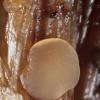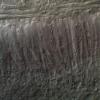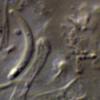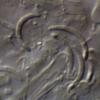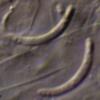
12-11-2021 00:03
Lepista ZacariasHi everybody,A week ago in my fiels trip I noticed

29-12-2025 17:44
Isabelle CharissouBonjour,J'aimerais savoir si d'autres personnes au

29-12-2025 17:12
 Bernard CLESSE
Bernard CLESSE
Bonjour à toutes et tous,Pourriez-vous m'aider à

29-12-2025 17:01
Gernot FriebesHi,I'm looking for help with this hyphomycete with

29-12-2025 08:30
Hello.A tiny ascomycete sprouting under Juniperus

29-12-2025 10:15
Hulda Caroline HolteHello, I found and collected this propoloid ascom

29-12-2025 09:38
Oskari VirtanenHi,could anyone help me identify this, I suspect P
Orbilia sp. on Typha
Chris Yeates,
30-09-2014 21:49
 Bonsoir tous
Bonsoir toustoday I collected a few scattered apothecia of a discomycete which was difficult to see as it had the same pale brown colour as the surrounding stem of Typha latifolia.
Under the microscope it was clear that it was an Orbilia (with the characteristic knob-topped paraphyses). Inside the asci the spores were clearly long-cylindric and curved with short spore bodies at one end (half the spores reversed). Unusually for an Orbilia, in my limited experience, in a water mount there were many free spores. These were very much curved, some almost into a semicircle - I wonder whether the tension to form this shape contributed to the ease in which so many were ejected in the water mount.
Here are some preliminary images - I can post more in due course, but these are typical. The spore measurements were made from spore tip to spore tip, so they are like the string on a bow, rather than an attempt to measure them along the curve. Measurements made so far are in the range 8.1-10.9 x 1.2-1.3(1.4)µm.
I note there is an Orbilia arundinacea listed as occurring on monocot's like Typha; but looking at the protologue in Velenovsky (1934) he says of the spores 'Sp. . . . rectae' and no spores seen could be described as anything near straight. I cannot find O. arundinacea in Zotto's images - maybe I have missed something.
As ever, help very much appreciated.
Cordialement
Chris
Hans-Otto Baral,
30-09-2014 22:16

Re : Orbilia sp. on Typha
Hi Chris
this would require a section of the margin, in order to see whether it is a nematode-trapping species or not, and conidia :-)
O. arundinacea is a synonym of O. rectispora - typical for Typha and the like, but, as you say, with rather straight spores.
It is sometimes that you have many free spores in Orbilia. Difficult to explain. But the spore curvature which is actually less so inside the ascus - logically - can hardly contribute to this. The spores are agglutinated in one packet prior to discharge, and the packet is ejectd as one entity.
Zotto
Zotto
this would require a section of the margin, in order to see whether it is a nematode-trapping species or not, and conidia :-)
O. arundinacea is a synonym of O. rectispora - typical for Typha and the like, but, as you say, with rather straight spores.
It is sometimes that you have many free spores in Orbilia. Difficult to explain. But the spore curvature which is actually less so inside the ascus - logically - can hardly contribute to this. The spores are agglutinated in one packet prior to discharge, and the packet is ejectd as one entity.
Zotto
Zotto
Chris Yeates,
30-09-2014 22:28

Re : Orbilia sp. on Typha
Thanks Zotto for the quick response - and there was I thinking such distinctive spores might make it easy!
I have little material to work with but I shall have a go at the section, probably tomorrow. What am I looking for in the margin which would tell whether it is a nematode trapper?. I have seen no evidence of conidia but will have a very careful look.
Chris
I have little material to work with but I shall have a go at the section, probably tomorrow. What am I looking for in the margin which would tell whether it is a nematode trapper?. I have seen no evidence of conidia but will have a very careful look.
Chris
Hans-Otto Baral,
30-09-2014 22:34

Re : Orbilia sp. on Typha
Orbilia auricolor has just those spores, and it is a collective species with an Arthrobotrys anamorph, trapping nematodes by adhesive networks. However the spores are more tapered at the basal end in O. auricolor, so we are a bit reluctant.
Another option would be O. sambuci = O. fimicoloides, a lkewise plurivorous species with a Dactylella anamorph and no trapping capabilities. The Dactylella conidia are very characteristic: very large, fusiform, multiseptate.
The marginal excipulum forms distinct cell rows under a low angle in those with Dactylella, but roundish cells oriented under a high angle in those with Arthrobotrys.
Another option would be O. sambuci = O. fimicoloides, a lkewise plurivorous species with a Dactylella anamorph and no trapping capabilities. The Dactylella conidia are very characteristic: very large, fusiform, multiseptate.
The marginal excipulum forms distinct cell rows under a low angle in those with Dactylella, but roundish cells oriented under a high angle in those with Arthrobotrys.


